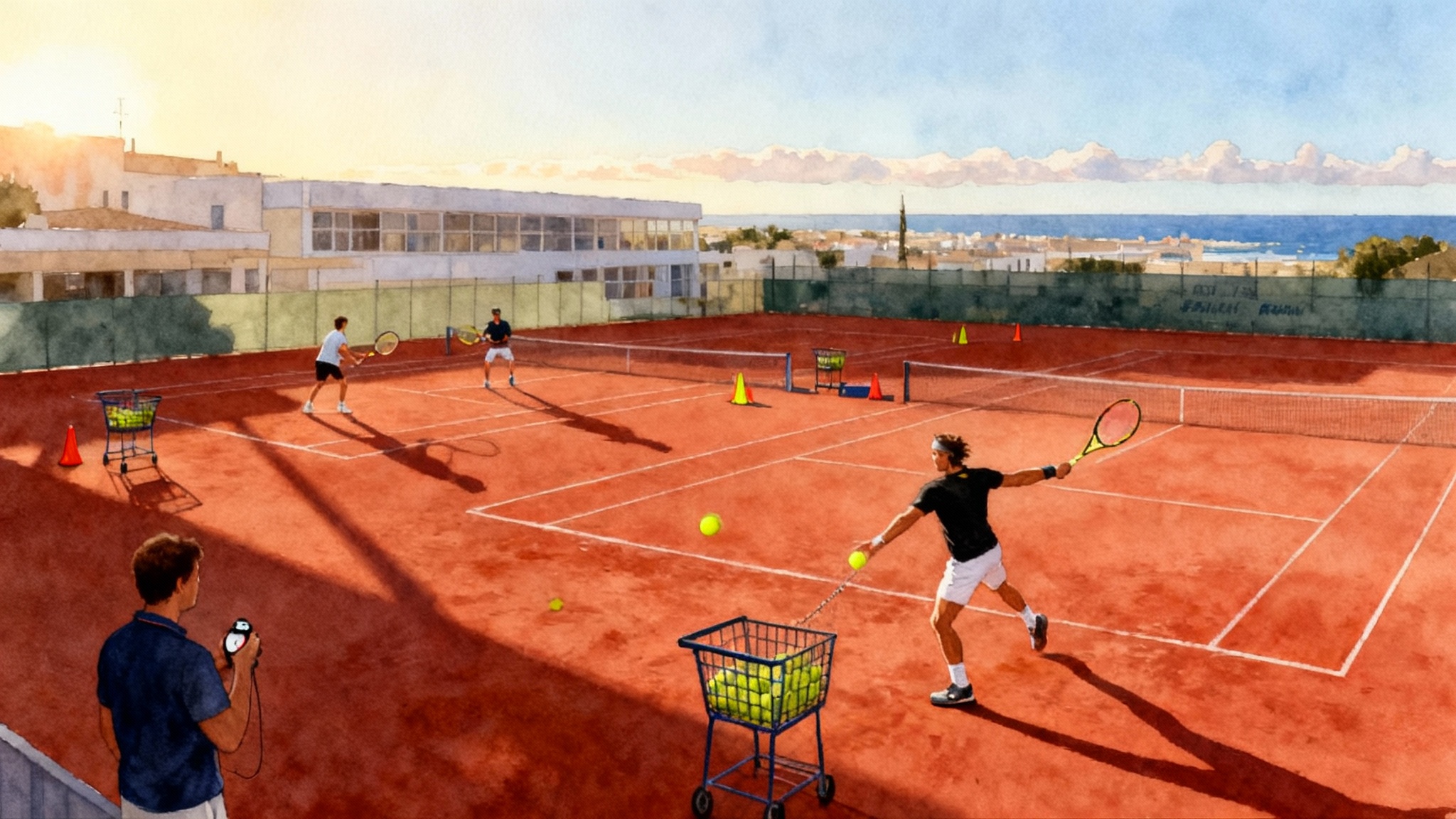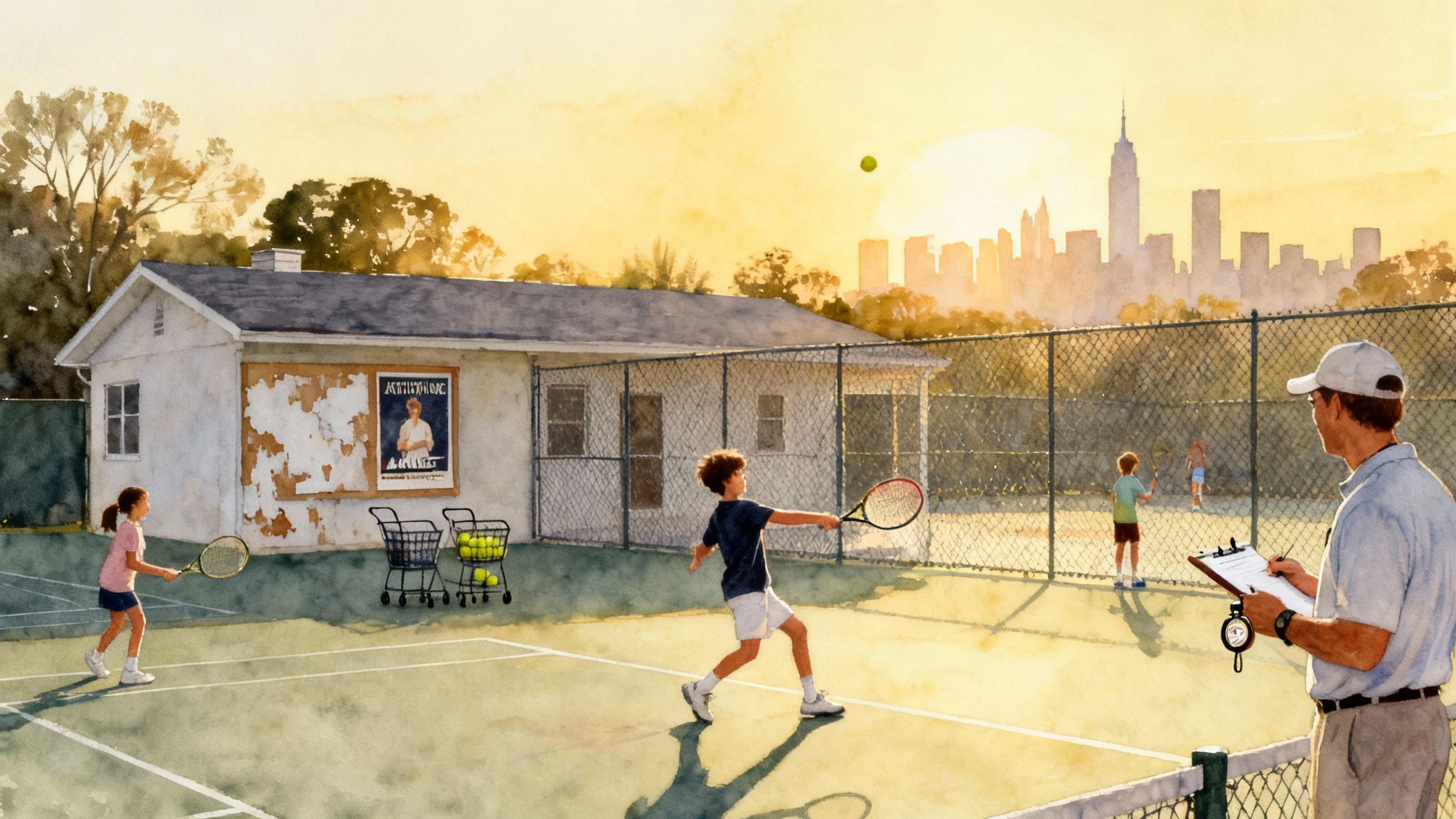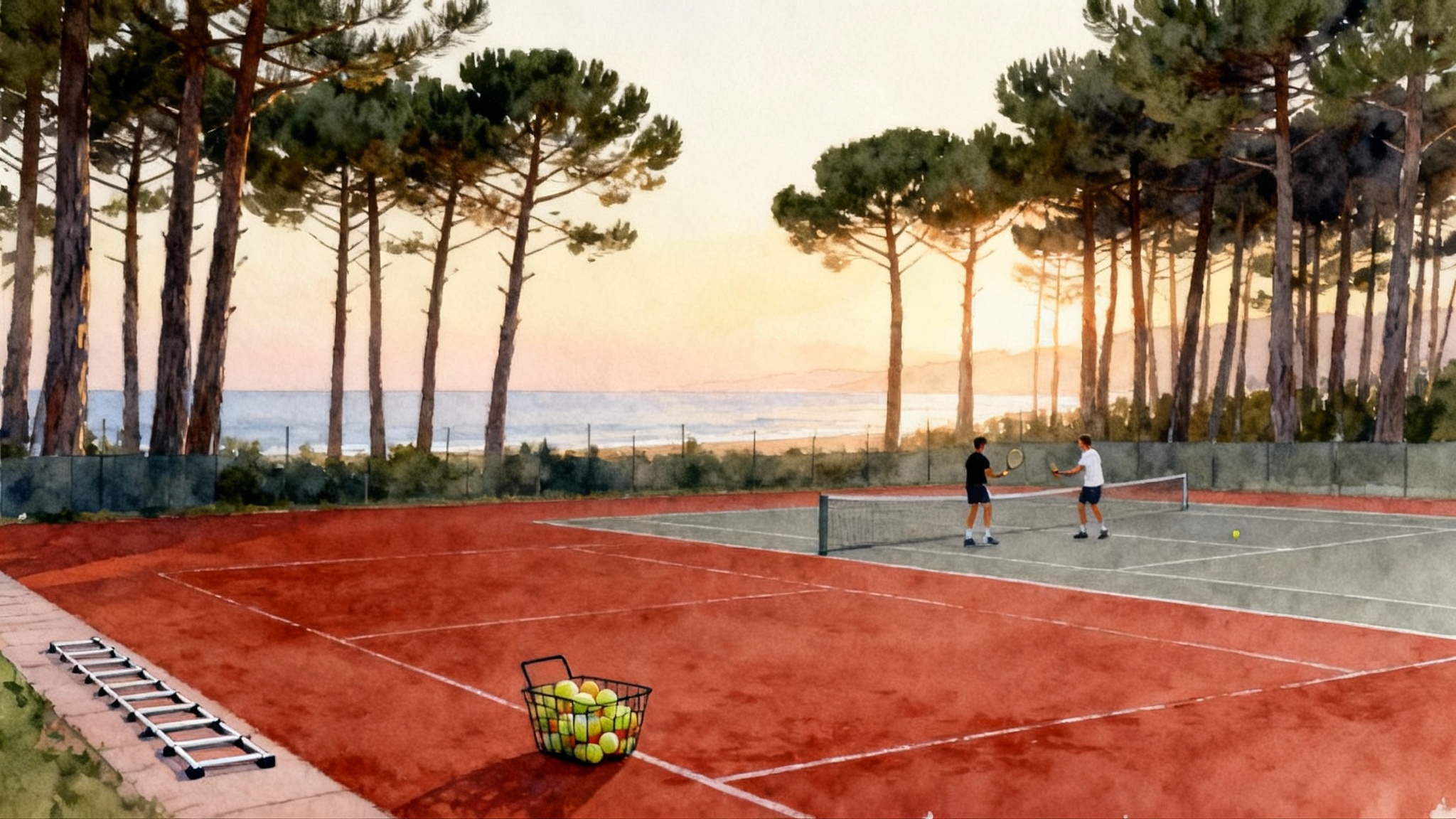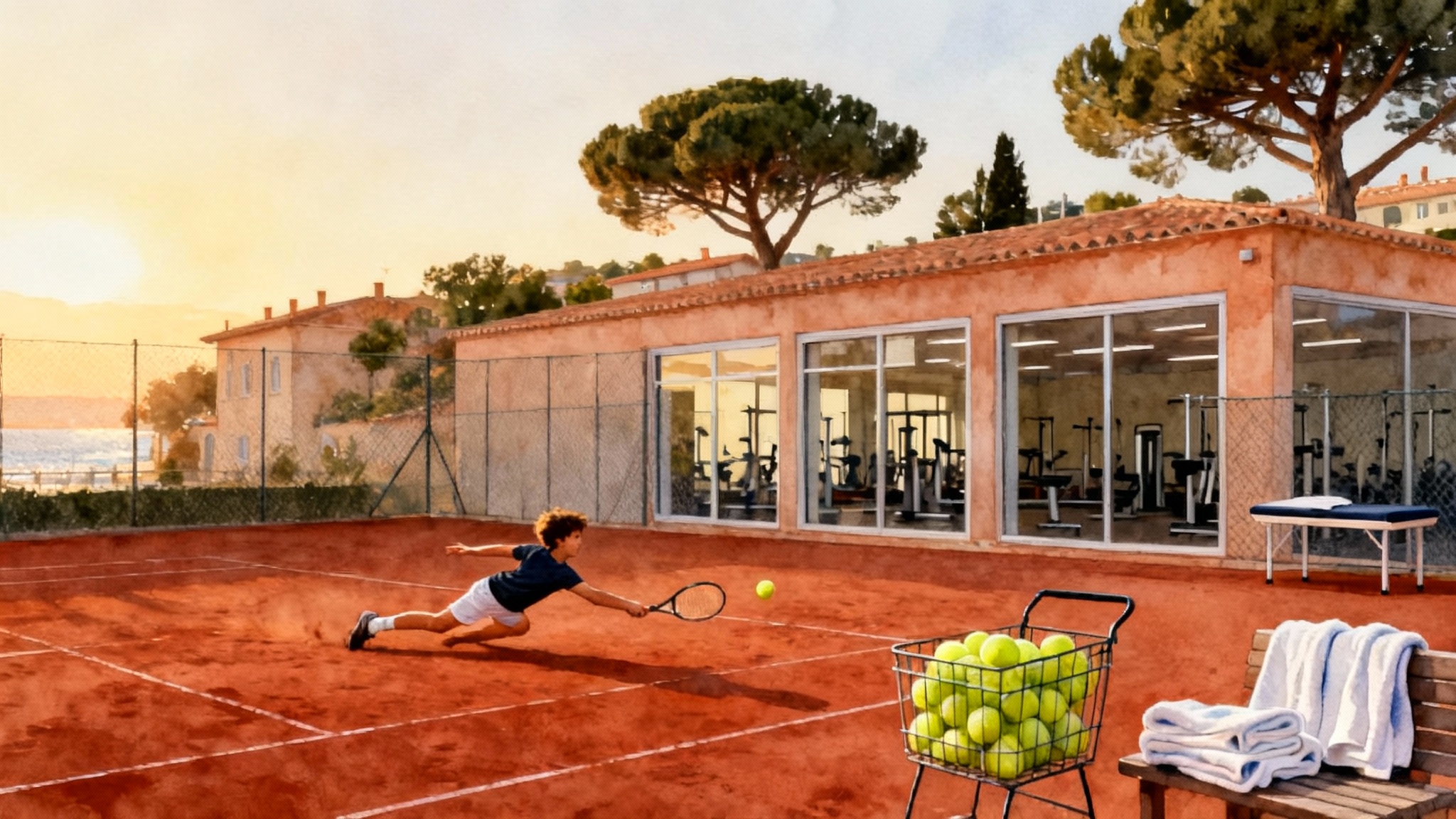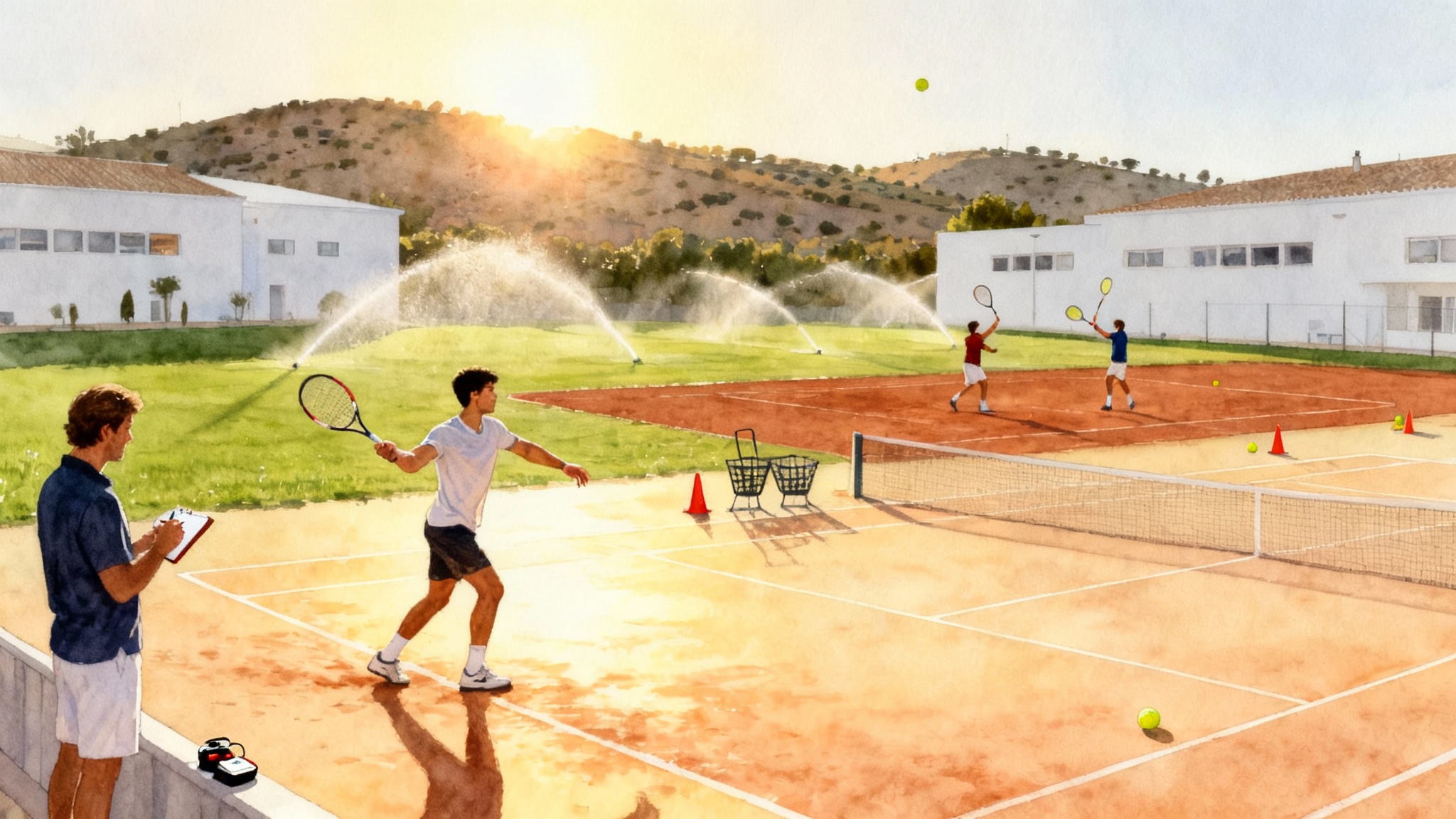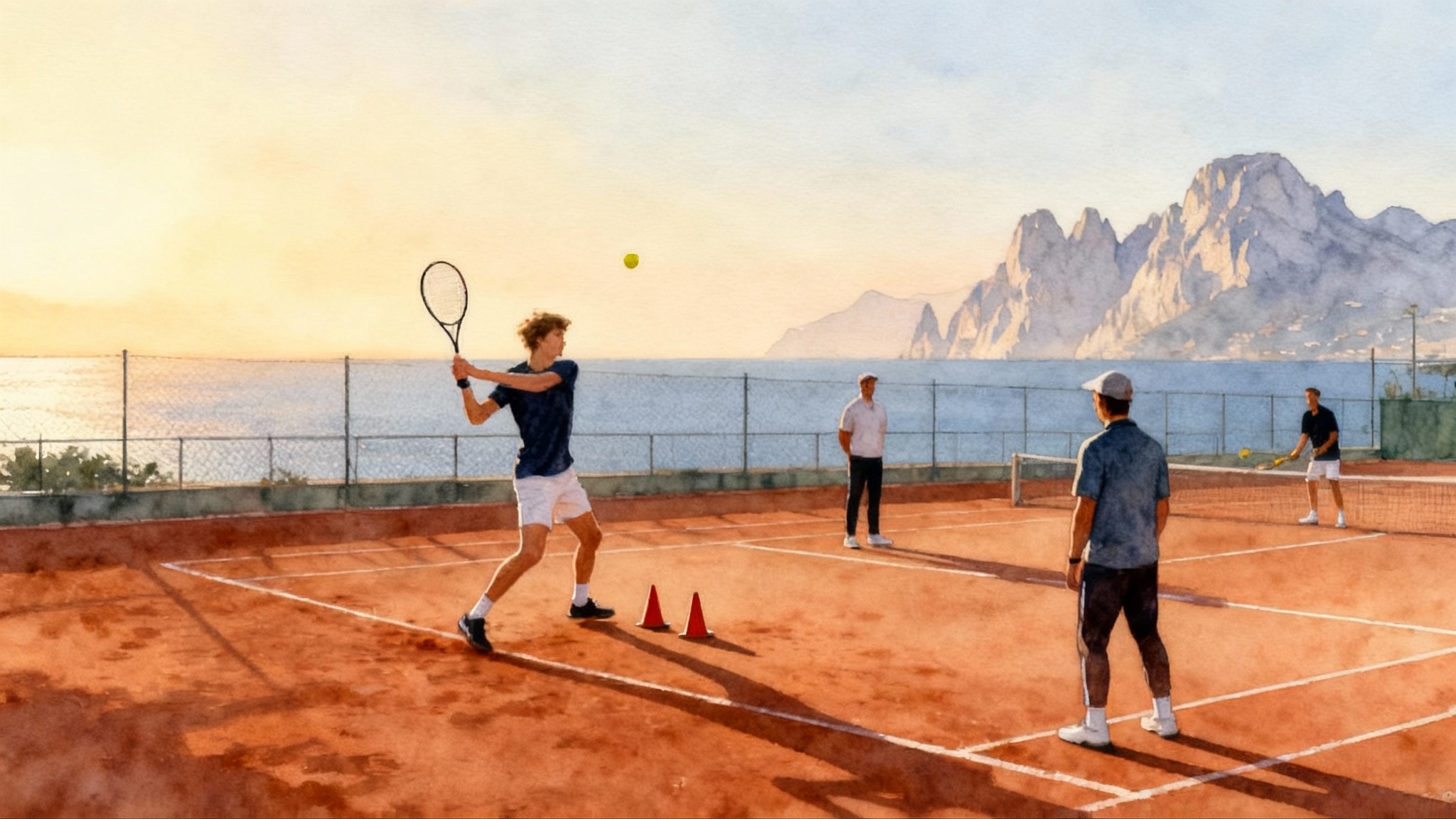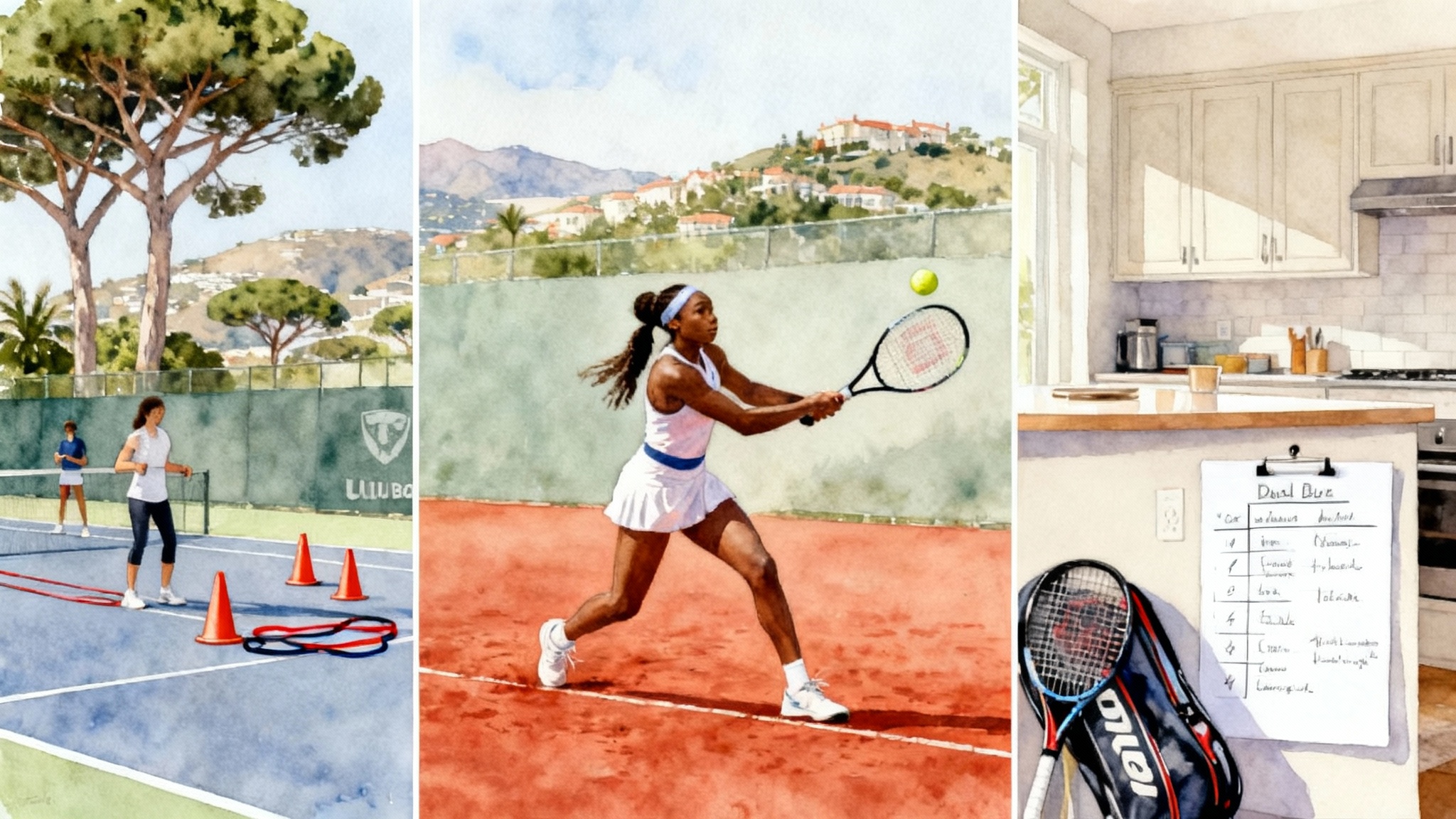From IMG Academy to the ATP Tour: Sebastian Korda’s Playbook
How a pro-rich training environment in Bradenton, structured match play, integrated fitness, and smart family guidance helped Sebastian Korda move from elite junior to Association of Tennis Professionals title winner. A practical map for parents.
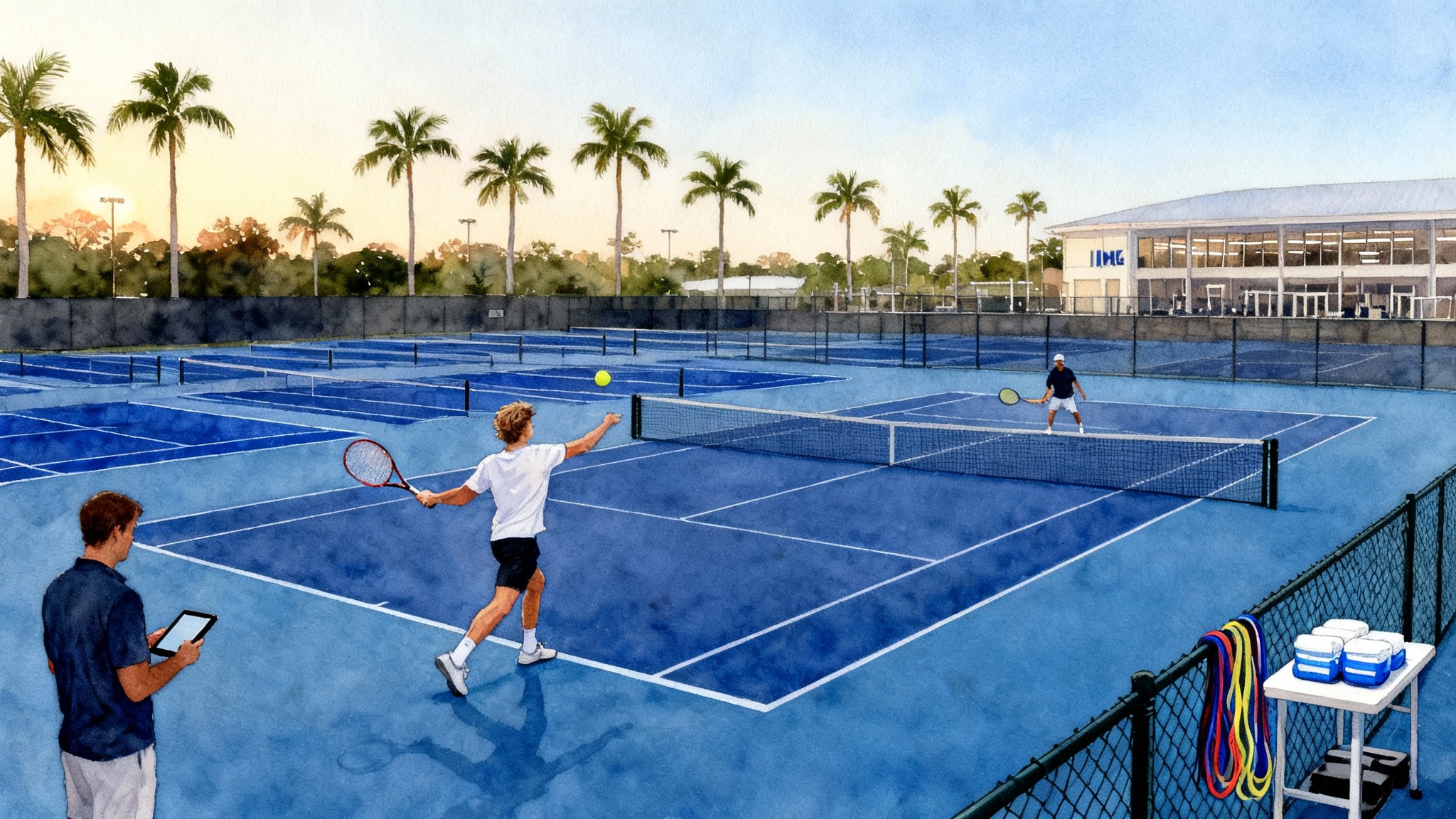
Why Sebastian Korda’s path matters
Every tennis parent hears the same promise. Big academies offer world class courts, famous alumni, and a schedule that looks like a professional’s day planner. Yet families still wonder how a talented junior actually uses that environment to make the hard leap from winning in the juniors to winning on the ATP Tour.
Sebastian Korda is a clear case study. He won the Australian Open boys’ singles and then climbed into the sport’s top tier, capturing his first ATP title in Parma, a city with a serious clay tradition highlighted in our Tennis Club Parma profile. You can see the trajectory on Korda’s ATP Tour profile. The interesting part is not a single breakthrough but the system that produced each step.
This article breaks down that system. We show how IMG Academy in Bradenton, Florida shaped Korda’s daily work, how his family’s guidance and outside specialists fit into that work, and how smart tournament scheduling after injury kept momentum without rushing. For more development blueprints, compare the patterns in How Equelite forged Carlos Alcaraz and How JTCC forged Frances Tiafoe.
The home base: committing to Bradenton full time
Most juniors flirt with a big academy during holiday camps. Korda and his family did more than sample the buffet. They committed to a full time base in Bradenton. That choice mattered for three reasons.
-
Routine compounds. The calendar stopped being a series of special weeks and became a repeatable routine. At the top of any sport, progress is compounding interest. You get paid for what you do daily. A stable home base lets coaches stack small improvements day after day until they form a distinct style of play.
-
Pro-rich stimulus. Bradenton gave Korda consistent access to a pro-rich training environment. On a random Tuesday, the court next door might host a top one hundred player, and the gym might have a Grand Slam quarterfinalist finishing sprints. That density normalizes elite standards and calibrates what professional speed looks like.
-
Friction is removed. Courts, gym, physio, and recovery live in one place. With logistics simplified and hitting partners prearranged, the player spends energy on execution, not coordination.
What IMG Academy added to the Korda equation
Korda brought unusual assets. He is the son of Petr Korda, a Grand Slam champion, and Regina Rajchrtová, a former professional, and the brother of elite golfers Nelly and Jessica Korda. That family context sets a high standard. The Bradenton environment had to add net value beyond genetics and dinner table wisdom. Here is what made the difference.
Structured match play against real heat
Drills shape skills. Matches reveal habits. IMG Academy does not treat match play as a Friday treat. It sits in the middle of the week, scripted to test specific phases of a point. One day might start at 30–30 on the return, another might open every game with a second serve. These constraints turn match play into a laboratory.
That structure helped Korda sharpen patterns that translate to the tour. Starting games under pressure forces cleaner footwork on the first strike. Return‑focused sets highlight court position habits. Over time, the player sees not just if they won a set but why. That why is what carries to professional matches.
Integrated fitness and recovery under one roof
A tennis career is a thousand small choices about load. Lift too heavy before a long set play afternoon and footwork gets sticky. Skip mobility after a travel day and the back tightens by Thursday. IMG Academy’s strength coaches, physios, and court coaches compare notes daily. If Tuesday morning is a heavy lower body session, the afternoon on court shifts toward serve patterns and short point scenarios. If a tight shoulder shows up, prehab replaces guesswork.
The obvious benefit is fewer soft tissue surprises. The deeper benefit is confidence. When a player trusts the plan, they move freely and swing without the ghost of last month’s tweak.
Access to mentors for real time problems
In many local programs, the toughest questions come home as homework. How do you shape a game plan against a left‑handed counterpuncher who floats the forehand. How do you reset after a double fault heavy set. In Bradenton, those questions meet coaches and sparring partners who have lived them. Advice arrives during the drill, not three days later.
Supplementing family coaching with outside experts
Growing up around elite sport is like learning a second language at home. You absorb rhythm and tone without effort. The risk is overreliance. The Kordas avoided that trap by bringing in outside coaches and specialists when they added clear value.
- Technical eyes for the serve and backhand. A fresh coach can spot a small leak the family no longer sees.
- Sports science inputs for the long term. Force plate data, range of motion screens, and heart rate variability trends tell you when to push and when to hold.
- Mental performance with a plan. Breathing triggers, between point routines, and short cues are designed and rehearsed long before match day.
The lesson for parents is balance. Keep the family’s voice for identity and big decisions. Invite experts for narrow, high yield fixes. Write down how the voices fit together so the player hears a single plan, not a choir.
Building a smarter tournament calendar
Results tempt juniors to chase points everywhere. The Korda path shows a more deliberate approach.
- Build blocks. Training blocks of three to five weeks anchor the year. Travel blocks cluster events by surface and region.
- Choose events that fit the game you are building. If the focus is first strike tennis, pick faster courts. If the goal is to harden defense, use a clay stretch to demand longer rallies.
- After injury, return with constraints. The goal is to bank pain free reps. That might mean two tournaments, then a week back on the training base for a movement and strength audit, then another two.
The day that scales: one repeatable template
A single day cannot decide a career, but a repeatable day can. Use this template to discuss with any academy.
Morning
- Movement screen and warmup for 10–15 minutes.
- First on‑court block for 75–90 minutes. One technical theme, one tactical theme. Example: serve toss rhythm, then plus‑one forehand to the ad corner.
- Short recovery: protein and carbohydrate target, hydration plan, and five minutes of parasympathetic work.
Midday
- Strength and power for 45–60 minutes. Two lower body patterns, two upper body patterns, one anti‑rotation, one jump or throw. Speed is the aim.
- Lunch and education for 30 minutes: scouting, string tension effects, or a three point pre‑serve routine.
Afternoon
- Second on‑court block. Match play with constraints that match the week’s focus. Video on one baseline for immediate feedback.
- Cooldown and treatment. Mobility for target joints, soft tissue work, and if needed a physio check‑in.
Evening
- Light mental skills. Journal two to three lines on what went well and what to adjust tomorrow. Brief visualization.
- Sleep plan. Target bedtime window and simple pre‑sleep routine.
Inside the Bradenton environment
Make pro‑rich concrete when you evaluate an academy.
- Hitting partners. How often can a nationally ranked junior hit with a high level college player or a touring pro in town for training or rehab. Ask for names and times.
- Coach to player ratio. Get hard numbers at peak hours. A lower ratio during technical work and a higher ratio during match play is normal.
- Gym flow. Look for posted warmups, sets and reps, and logged loads. If athletes wander station to station, you are buying access, not coaching.
- Recovery resources. Who adjusts training when a player reports soreness, and how quickly does that reach the court coach.
If you want to see how IMG frames the pathway, read the IMG Academy tennis program overview and use it as a script for the questions above.
The step by step map from elite junior to first title
- Build the base skill set under pressure. Before chasing results, sharpen service plus one patterns, a backhand that holds shape under pace, and a trusted return position.
- Normalize professional pace in practice. Exposure is a calibration tool, not a luxury.
- Turn match play into focused experiments. Every training match should test one habit. Track the habit, not only the score.
- Add specialists with defined roles. State the outcome you expect and revisit it every four weeks.
- Protect training blocks. A strong month on the practice court often beats three scattered events.
- After injury, measure load, not pride. Use objective checks to decide when to add volume.
- Choose first senior titles with intention. Aim for events that match recent form and your current skill set.
A practical playbook parents can apply when evaluating big academies
Use these questions and actions as your due diligence list.
- Can my child get three high quality hitting sessions per week with older, stronger, or higher ranked players. Ask for names and times. Sit in on one session.
- Who writes the weekly plan. You want one person accountable for the whole week, not a patchwork of court coaches and gym staff.
- How does match play work. Watch a match day and note start scenarios, scoring formats, and coach feedback.
- What is the communication loop. Ask how the gym staff and court coaches share notes.
- What is the return to play protocol after injury. There should be stages with objective checks.
- How is progress measured. Use a mix of video, simple metrics such as first serve percentage by pattern, and physical benchmarks.
- What is the ratio of training weeks to tournament weeks across the year. A two to one ratio of training weeks to tournament weeks suits most developing players.
- What does a typical day cost and what is included. Clarify whether the rate includes fitness, physio access, and recovery tools, or only court time.
Print this list and use it during tours. The best academies welcome specific questions because they already have specific answers.
Cost, value, and how to decide
Big academies are expensive. The right question is how the environment converts dollars into skills. Evaluate value through three lenses.
- Exposure to pace you cannot get at home.
- Integration of coaching and support staff into one plan.
- Repeatability of daily routines at home and on the road.
Bringing it all together
Sebastian Korda’s climb from elite junior to ATP title winner was not a fairy tale. It was a sequence. A committed base at IMG Academy in Bradenton provided daily density of pros, structured match play, and integrated fitness and recovery. The Korda family added standards and judgment, then pulled in outside experts for targeted gains. A smart calendar, especially after injury, turned improvements into results without burning the candle at both ends.
That sequence is the real lesson. Parents do not need a magic academy. They need a place that makes hard work automatic, feedback fast, and decisions coordinated. If you walk an academy and see those three things, your player has a runway. Add patience and a plan, and the jump from elite junior to first adult title becomes less about luck and more about design.
